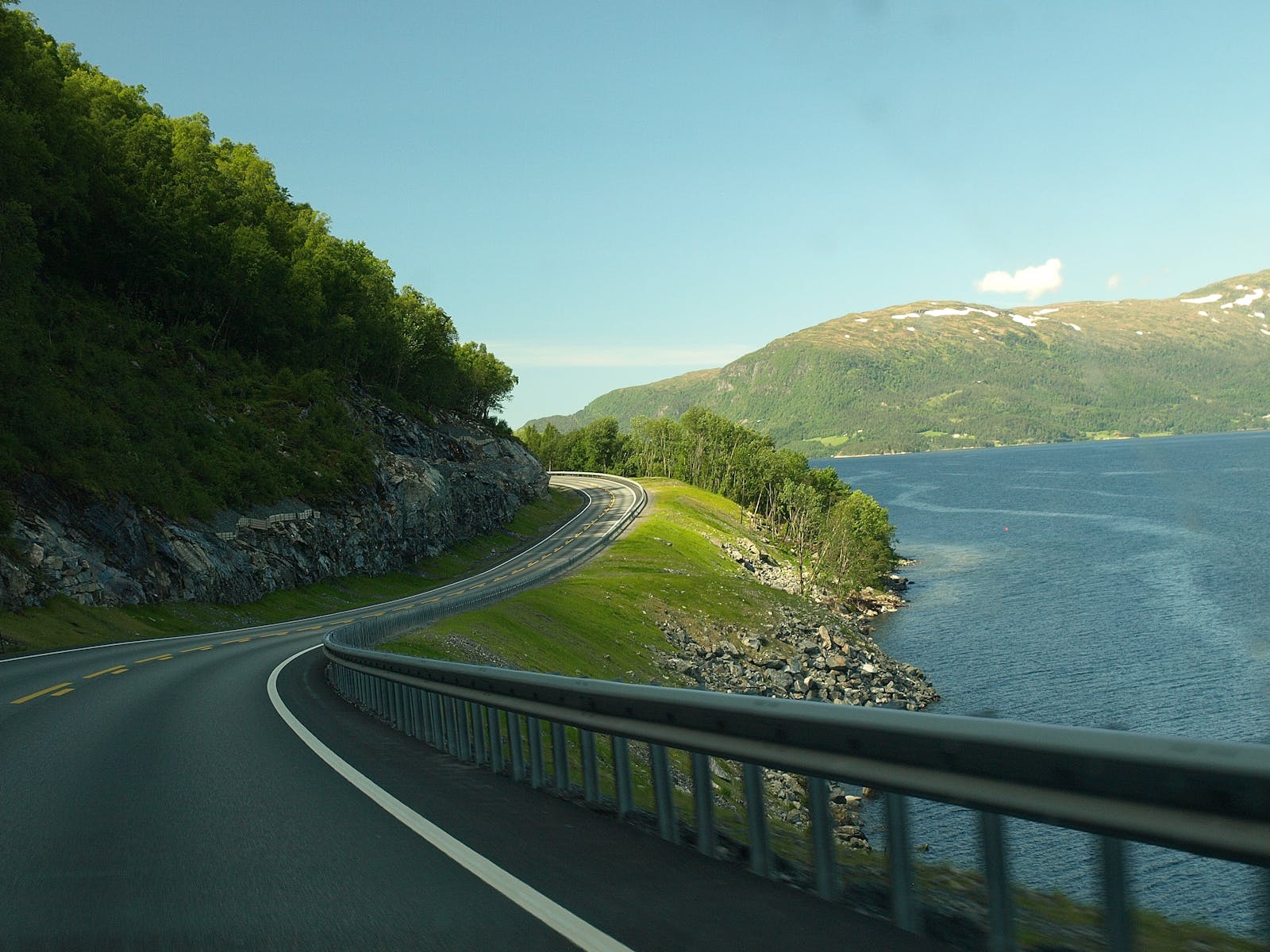Bank holidays offer the perfect opportunity to explore the UK’s stunning landscapes and hidden treasures by car. A road trip allows you to discover charming villages, dramatic coastlines, and rolling hills at your own pace.
Table of Contents
The UK boasts numerous scenic routes that showcase its diverse beauty, from the rugged Scottish Highlands to the picturesque Cornish coast.

Planning a bank holiday road trip can be an exciting adventure. It’s a chance to escape the daily grind and create lasting memories with friends or family. By venturing off the beaten path, you can uncover lesser-known attractions that are often overlooked by traditional tourists. These hidden gems might include quaint tea rooms, historic ruins, or secluded beaches.
While popular destinations can be crowded during bank holidays, a well-planned road trip allows you to avoid the busiest spots. You can seek out quieter areas and enjoy a more relaxed experience.
Make sure to pack essentials like snacks, a map, and a good playlist to make your journey even more enjoyable.
Key Takeaways
- Scenic routes showcase the UK’s diverse landscapes and hidden attractions
- Planning helps avoid crowds and discover lesser-known spots
- Packing essentials enhances the road trip experience
Planning Your Bank Holiday Adventure

A successful bank holiday road trip requires thoughtful preparation. Consider your vehicle choice, pack wisely, and map out an exciting route to make the most of your journey.
Choosing the Right Vehicle
Pick a car that suits your trip’s needs. For long drives on motorways, a comfortable saloon or estate car works well. If you plan to explore narrow country lanes, a smaller hatchback might be better.
For groups, a spacious SUV or people carrier provides ample room. Check the boot space to ensure it fits all your luggage.
If you’re renting, book early for bank holidays as vehicles can sell out quickly. Compare fuel efficiency to keep costs down on longer trips.
Packing Essentials for the Road
Pack light but smart. Bring versatile clothing suitable for changing weather. Don’t forget:
- First aid kit
- Snacks and water
- Phone charger
- Maps (paper and digital)
- Emergency car kit
For comfort, pack pillows and blankets. Bring entertainment like books, music, or games for passengers.
Remember any specific items needed for planned activities, such as hiking boots or swimming costumes.
Mapping Your Journey
Plan your route in advance. Use online tools to find scenic roads and interesting stops. Allow extra time for traffic, especially during bank holidays.
Research potential sights and attractions along the way. Book popular activities or accommodations ahead of time to avoid disappointment.
Plan regular breaks every two hours to stretch your legs and stay alert. Look for service stations or picturesque spots to pause.
Be flexible with your schedule. Leave room for unexpected discoveries or detours that catch your eye during the trip.
Iconic Scenic Routes in the UK
The UK boasts stunning driving routes that showcase its diverse landscapes. From coastal roads to mountain passes, these scenic drives offer unforgettable views and experiences for bank holiday road trips.
The Atlantic Highway, England
The Atlantic Highway stretches along the southwest coast of England. This 70-mile route runs from Barnstaple to Newquay, passing through North Devon and Cornwall.
Drivers can enjoy breathtaking sea views and charming coastal villages. Key stops include:
- Bude: A lovely seaside town with sandy beaches
- Tintagel Castle: Legendary birthplace of King Arthur
- Padstow: Picturesque fishing port known for seafood
The road winds through rolling hills and farmland, offering glimpses of the rugged coastline. Spring and summer are ideal times to drive this route, when wildflowers bloom in the hedgerows.
North Coast 500, Scotland
The North Coast 500 is a 516-mile circular route around the northern Scottish Highlands. It starts and ends in Inverness, taking in some of Scotland’s most dramatic scenery.
Highlights of the journey include:
- Bealach na Bà: A twisting mountain pass with hairpin bends
- Dunrobin Castle: A fairy-tale-like stately home
- John O’Groats: The northernmost point of mainland Britain
The route passes white sandy beaches, rocky cliffs, and remote fishing villages. Drivers might spot wildlife like red deer, golden eagles, and seals along the way.
Snake Pass, Peak District
Snake Pass is a high mountain route in the Peak District National Park. It runs for 20 miles between Manchester and Sheffield, reaching heights of 510 metres above sea level.
The road offers stunning views of the surrounding moorland and valleys. Key features include:
- Ladybower Reservoir: A picturesque body of water
- Kinder Scout: The highest point in the Peak District
- Snake Woodland: Ancient woodland with diverse plant life
Snake Pass can be challenging in bad weather, so it’s best driven on clear days. The route is popular with cyclists and motorcyclists as well as car drivers.
Hidden Gems Along Your Route

The UK’s roads lead to amazing hidden treasures. From charming villages to secret beaches and off-the-radar cultural sites, there’s plenty to discover on your bank holiday trip.
Quaint Villages and Coastal Towns
Nestled in the Cotswolds, Castle Combe is a picturesque village frozen in time. Its honey-coloured cottages and babbling brook make it perfect for a leisurely stroll.
On the Cornish coast, Polperro charms visitors with its narrow streets and colourful fishing boats. The village’s tiny harbour and cosy pubs offer a taste of traditional seaside life.
In Scotland, Crail in Fife boasts a stunning harbour and quaint fishermen’s cottages. Its quiet beauty and fresh seafood make it a lovely stop on any Scottish road trip.
Secret Beaches and Natural Wonders
Kynance Cove in Cornwall is a hidden paradise. Its turquoise waters and dramatic rock formations create a stunning backdrop for sunbathing or exploring.
Luskentyre Beach on the Isle of Harris offers miles of white sand and crystal-clear waters. It’s often empty, giving visitors a sense of having their own private paradise.
The Fairy Pools on the Isle of Skye are a series of beautiful waterfalls and pools. The clear blue waters are perfect for wild swimming on warm days.
Cultural Heritage Sites Off the Beaten Path
Stokesay Castle in Shropshire is a well-preserved 13th-century fortified manor house. Its peaceful setting and rich history make it a fascinating stop.
The Callanish Stones on the Isle of Lewis rival Stonehenge but with fewer crowds. These ancient standing stones offer a mystical experience in a stunning location.
Fountains Abbey in Yorkshire is a beautifully preserved Cistercian monastery. Its extensive ruins and water gardens provide a glimpse into medieval monastic life.
Activities for the Road Tripper’s Soul

A UK bank holiday road trip offers more than just scenic drives. Travelers can spice up their journey with unique local foods and thrilling outdoor adventures.
Must-Try Local Cuisines
No road trip is complete without sampling regional dishes. In Cornwall, savour a hot Cornish pasty, a flaky pastry filled with meat and veg. It’s perfect for a quick lunch on the go.
Head to Yorkshire for a proper Sunday roast with Yorkshire pudding. This hearty meal is best enjoyed in a cosy pub after a long day of driving.
In Scotland, brave souls can try haggis, a savoury pudding made from sheep’s organs. It’s often served with neeps and tatties (turnips and potatoes).
Fish and chips is a must-eat at any seaside town. Look for shops using fresh, local fish and crispy batter. Don’t forget to add salt and vinegar!
Outdoor Adventures for the Thrill Seeker
The UK’s varied landscape offers plenty of excitement for adrenaline junkies. In Wales, zip line through Snowdonia National Park at speeds up to 100 mph. It’s one of the fastest zip lines in the world.
For water lovers, try coasteering in Pembrokeshire. This sport combines swimming, climbing, and cliff jumping along rocky coastlines. Always go with a trained guide for safety.
In the Lake District, test your nerve with ghyll scrambling. Climb up mountain streams, leap into pools, and slide down natural chutes. It’s a wet and wild way to explore the fells.
Fancy a bird’s-eye view? Take a hot air balloon ride over the Cotswolds. Float above picturesque villages and rolling hills at sunrise or sunset.
Best Practices for Responsible Travel

Responsible travel helps protect the environment and support local communities. It’s important to be mindful of our impact when exploring new places.
Respecting Natural Landscapes
When visiting natural areas, stick to marked trails and paths. This prevents damage to delicate ecosystems. Take rubbish with you and dispose of it properly. Many scenic spots have a ‘leave no trace’ policy.
Avoid disturbing wildlife or removing plants. Instead, take photos to remember your trip. If camping, use designated sites and follow fire safety rules.
Be careful not to trample vegetation when parking. Some popular spots have overflow car parks to reduce environmental impact during busy times.
Supporting Local Economies
Stay in locally-owned B&Bs or guesthouses instead of big chain hotels. This puts money directly into the community.
Eat at local restaurants and cafes. Try regional specialities to get a taste of the area’s culture.
Shop at farmers’ markets and independent shops for souvenirs. Look for items made by local artisans.
Take part in community-led tours or activities. These often provide a more authentic experience and benefit residents directly.
Consider using public transport where possible. This reduces traffic and supports local bus and train services.
Navigating UK Weather and Traffic
UK weather and traffic conditions can greatly impact bank holiday road trips. Planning ahead and staying informed are key to a smooth journey.
Forecast Trends and Seasonal Advantages
Spring bank holidays often bring mild temperatures and a mix of sun and showers. Pack layers and rain gear just in case. Summer bank holidays tend to be warmer and drier, perfect for top-down driving. Be prepared for higher UV levels by bringing sunscreen and sunglasses.
Autumn trips may see cooler temps and changing leaves. Slow down on wet roads covered in fallen foliage. Winter bank holidays can bring icy conditions in some areas. Check your tyres and antifreeze before setting off.
The Met Office provides 5-day forecasts to help plan your route. Local radio stations also give frequent weather updates as you drive.
Avoiding Congestion and Road Closures
Bank holidays mean busier roads, especially near popular attractions. Leave early in the morning or later in the evening to dodge peak traffic times. Use sat nav apps with live traffic data to route around jams.
Check the Highway Agency website for planned roadworks before your trip. They often pause major works, but some lane closures may remain in place.
Consider alternatives to motorways, like scenic A and B roads. While slower, these routes offer charming villages and countryside views with less congestion.
Park and ride facilities on the outskirts of cities can save time and stress. Leave your car and hop on public transport to explore urban areas more easily.
Ensuring Safety on UK Roads
Road safety is crucial for an enjoyable bank holiday trip. Proper preparation and knowing what to do in emergencies can prevent problems and give peace of mind while exploring the UK’s scenic routes.
Comprehensive Breakdown Cover
Breakdown cover is a must for any road trip. It provides help if your car breaks down, saving time and stress. Many providers offer different levels of cover.
Basic policies may only tow your car to a garage. More comprehensive plans can include roadside repairs, alternative transport, and overnight accommodation.
Check your policy details before setting off. Make sure it covers your whole trip, including any ferry crossings. Keep the breakdown service number handy in your phone and glove box.
First Aid and Emergency Protocols
A well-stocked first aid kit is essential for any journey. Basic items to include are plasters in various sizes, sterile gauze dressings, disposable gloves, scissors, tweezers, and antiseptic wipes.
Know basic first aid steps for common issues like cuts or burns. In case of a serious accident, stay calm and call 999 for help. Turn on your hazard lights and use a warning triangle if safe to do so.
Keep important documents like car insurance and driving licence easily accessible. Also, have emergency contact numbers written down, not just stored in your phone.
Capturing Memories: Travel Photography Tips
Great photos help preserve memories of your bank holiday road trip. A few simple techniques can improve your travel snapshots.
Use the rule of thirds when framing shots. Imagine a 3×3 grid over your scene and place key elements along the lines or at intersections.
Lighting makes a big difference. The “golden hours” just after sunrise and before sunset offer warm, flattering light. Meanwhile, overcast days provide soft, even lighting.
Get creative with angles. Crouch down low or find a high vantage point for unique perspectives. Also, move around to frame subjects in interesting ways.
Include people in some photos to add scale and interest. Candid shots often capture genuine moments and emotions.
Don’t forget details. Close-ups of food, architecture, or nature can tell a story about a place.
Pack a small tripod for steady shots in low light. It’s handy for group photos too.
Edit lightly afterwards to enhance colours and contrast. But avoid over-processing that looks unnatural.
Remember to put the camera down sometimes and simply enjoy the moment. Photos are wonderful, but being present matters most.
Frequently Asked Questions
Bank holiday road trips in the UK offer plenty of opportunities for scenic drives and hidden gems. These common questions cover key aspects of planning an enjoyable getaway.
What are the top scenic driving routes in the UK for a bank holiday getaway?
The North Coast 500 in Scotland is a stunning coastal route. It covers 516 miles of breath-taking scenery. The Atlantic Highway in Southwest England offers beautiful views of the coastline.
The Causeway Coastal Route in Northern Ireland is another top pick. It features dramatic cliffs and charming villages.
Can you recommend some lesser-known attractions to visit in the UK during a bank holiday?
The Minack Theatre in Cornwall is a unique open-air theatre carved into the cliffs. Puzzlewood in Gloucestershire is a magical ancient woodland that inspired J.R.R. Tolkien.
The Forgotten Gardens of Heligan in Cornwall offer a slice of hidden history. These restored Victorian gardens were lost for decades.
How do I plan an effective road trip itinerary for the bank holidays?
Start by choosing a region to explore. Research the main attractions and driving times between stops. Then, book accommodation in advance, especially for popular areas.
Allow extra time for unexpected detours or traffic. Also, plan for regular breaks to stretch your legs and enjoy the scenery.
What are the best practices for driving in the UK’s countryside and coastal areas?
Be prepared for narrow lanes and sharp bends in rural areas. Drive slowly and be ready to pull over in passing places.
Watch out for wildlife, especially in national parks. Also, keep an eye on fuel levels, as petrol stations can be sparse in remote areas.
Are there any hidden coastal gems in the UK that are ideal for a bank holiday road trip?
Bamburgh Beach in Northumberland offers stunning views of Bamburgh Castle. The Gower Peninsula in Wales has beautiful, less-crowded beaches.
Lulworth Cove in Dorset is a picturesque horseshoe-shaped bay. It’s perfect for a scenic coastal walk.
What should I pack for a road trip around the UK’s scenic routes during a bank holiday?
Pack layers for changeable weather. Bring comfortable walking shoes for exploring.
Don’t forget a good map or GPS device. Include a first aid kit and car emergency kit.
Pack plenty of snacks and water for the journey.





